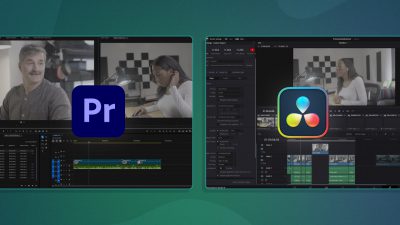A well-planned video marketing strategy takes video well beyond a few minutes of material to interest or educate your audience. A solid video marketing strategy will maximize the potential of video to build a lasting connection with your audience.
In this blog, we’re going to share how to build a video marketing strategy that will enable you to set out your road map to success. So step away from the video camera and get out a pen and paper. It’s time to get planning!
Step 1: Establish your video marketing goals.
This is where you determine what success means to you. It’s time to get real. If you’re new to video, you’re unlikely to go viral with your first one. Hits are likely to be low at first, but that’s fine. Video marketing is a process of building lasting relationships between your organization and your viewers. The aim is to steadily increase your views and engagement over time.
Set aside time every month to review your video analytics reporting. This is where the true story of your video marketing efforts will emerge. At SproutVideo, we designed our analytics platform to equip you with the information you need to measure your success accurately:
Plays
See at a glance how many plays and impressions your videos have gained. If a video has been especially popular or unpopular, then it’s time to work out why.
Location
By seeing where in the world your videos are being enjoyed, you can understand more about your audience. This feature is really useful if you’re trying to enter a new geographical market – you can see if viewers in the new location are responding to your message.
Popularity
If you know which videos perform the best, you can make more content in a similar style.
Domains
Do you know how people found your video? Removing the guesswork around how people find your content makes it easier for you to reach them.
Track each viewer
You can track individual users to see how they engage with your videos. Is there a part of your latest video that lots of people re-watch? Or perhaps the majority of viewers switch off after a certain point? This useful feature enables you to make content that’s specifically tailored to your customers.

Step 2: Define the video content that will boost your sales and interest viewers.
If your organization is a start-up, you probably won’t have much knowledge about your audience. But you will know about your business. Determine which parts of the business would benefit from video marketing, for example new products, events, sales, HR, internal communications. Then, you’ll need to work out the types of video content that work best for each of these.
Research What Works
To build this part of your video marketing strategy, we recommend spending some time researching what’s already popular online. As a starting point, the following types of video content are popular:
- Behind the scenes – see our post Let Them In: Go Behind the Scenes with Video for tips
- Events – our post Eight Ways to Showcase Your Event with Video is a great starting point if you’re interested in this
- Customer testimonials – see How to Get Great Customer Testimonials on Camera for expert advice
- Videos featuring influencers – Five Ways to Supercharge Your Campaigns with Influencer Video Marketing contains some essential tips on working with influencers
- Reviews – whether it’s a product or a service, people want to know what it’s like before they try it
- Vlogs – our post 27 Ways to Feel Like a Natural in Front of the Camera is a must-read for all vloggers
- Webinars – Read our post 10 Best Practices for Successful Webinars for details on getting started
- How-to videos – by providing value to potential customers, you’ll establish credibility and trust
Howcast are the go-to YouTube channel when it comes to high quality how-to videos. Their video How to Make Homemade Ice Cream in a Plastic Bag has three million views and counting:
Test Out Different Ideas
You might not have any evidence of what your audience is interested in, but don’t let that worry you. Use your existing knowledge of your customer demographic (age, interests, where and when they like to hang out online) and your imagination! Competitive research never hurts, either.
Try out different ideas, and see what gets the most traction. A video with high levels of engagement, and lots of shares, indicates high levels of viewer interest.
Before long, the type of videos that appeal most to your audience should become clear. By zeroing in on what works for your viewers, you can improve your content over time.
Now, you can write out a video marketing mission statement. Here’s a suggestion:
At [company name], we make video for [demographic group]. The aim of video is to support [business areas] to [outcome you want to see].
Step 3: Maximize video by incorporating it into your social media strategy.
Even if you’re primarily publishing your videos on your website, promoting them using social media is important. Videos that are popular on the main social media platforms will play a key role in driving viewers to your site.
Our post Completing Your Social Media Plan with Video sets out 11 very good reasons for incorporating video into your social media strategy.
What if you don’t exactly have tons of fans or followers? Try to build good working relationships with influencers, or other businesses and friends. They will usually be happy to promote your videos.
For example, the non-profit truth made an effective influencer video to promote their non-smoking message:
Working with influencers is a particularly effective way of using social media to promote your video. We’ve shared everything you need to know in our blog Rethinking Influencer Marketing for 2017. You can ensure that videos reach your audience at the best time thanks to HubSpot’s research The Best Times to Post on Facebook, Twitter, LinkedIn and Other Social Media Sites.
Step 4: Integrate video with your website.
Making your video content easily accessible for website users is vital. This means creating a video hub as well as using video throughout your website. The video hub is where all video content will be stored and categorized so it can be found easily. The categories can be reflective of your organization. Be inspired by how Lego have organized their video library – they’ve organized each video by story and character.
In addition to a dedicated video hub, video should be used throughout your website. Relevant videos should be placed alongside text-based information. For example, let’s imagine you own a company that produces camera tripods. A ‘how to set up your tripod’ video, accompanying written content about how easy it is to set up the tripod, would likely be useful for website visitors.

Step 5: Decide who does what.
Whether you’re working with a professional videographer or not, you still need to know how to manage the video production process. You’ll probably need to decide which members of your team are responsible for filming, editing, and hiring actors.
Producing high quality videos that are reflective of the image that you want to portray does take time. The time you can commit to this must be reflected in your marketing strategy. There’s no point in saying you’ll make a video a week if you realistically don’t have enough team members to do this.
Producing video by yourself is possible, with a few clever hacks and a can-do attitude. You’ll need the right equipment, a dash of inspiration, and some time to practice. Getting comfortable on camera, as well as honing your lighting and audio skills are essential. Head over to our post How to Produce High Quality Videos on Your Own for more on getting the basics right.
Conclusion: Plan, plan, plan!
Although it’s tempting to jump straight in and start making video straight away, this isn’t the best strategy. A considered, carefully planned approach to video is the one that will yield the best results.
Once you’re happy with your video marketing strategy, then it’s time to get recording! Once you know the basics, the best way to learn videography is by doing.
If you want any tips on the best way to build an effective marketing strategy, reach out to the SproutVideo team on Facebook or Twitter.








